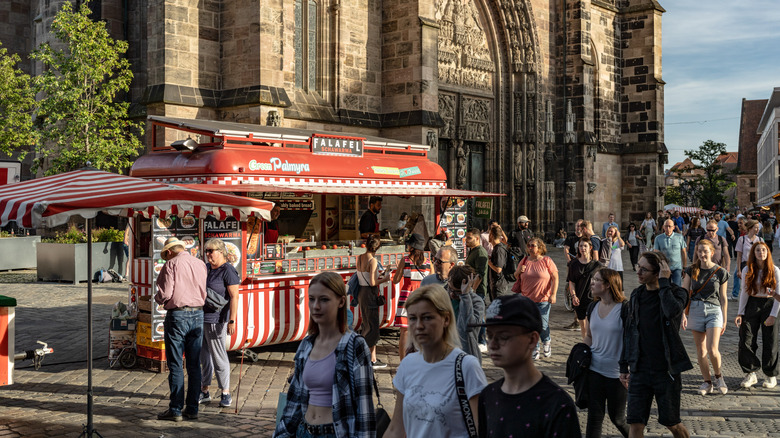These days, it’s not just trendy to embrace a plant-based diet — more and more research shows that going vegetarian or vegan can not only reduce your carbon footprint, but also improve your health and longevity. However, when you’re backpacking around the world, it can be difficult to find hearty and cheap vegetarian meals, depending on where you are. It’s easier to find meatless meals in places like India, where a decent chunk of the population is vegetarian (the cow is sacred in Indian culture). The same is true for the Middle East in places like Lebanon where there’s a plethora of meals like fattoush, tabbouleh, hummus, and baba ghanoush that are naturally meatless. However, in Europe, you might find it more challenging.
Germany loves its bratwurst. The French love their escargot (aka snails!). The British love cottage pie. The Spanish love paella, and the Portuguese love peri peri chicken. What is a vegetarian to do? Fear not, because the most trusted name in travel, Rick Steves, has posted to his official website a series of tips and tricks to make your journey across Europe a plant-based-foodie’s dream. According to him, meat-free meals are becoming more popular in Europe, and he suggests that if you’re crafty and don’t mind thinking outside the box, you can eat like royalty — and for cheap, too. Here’s how.
Falafel and burek are vegetarian and easy to find

Travel expert Rick Steves suggests that when you’re vacationing in Europe but want to stick to your plant-based diet, street food vendors might actually be your best bet. In America, you might think of hot dogs when you think of street food; but in Europe, you’re more likely to find hot falafel stands. Falafel is a Middle Eastern dish where chickpeas are ground together with parsley and spices, formed into balls, and deep fried. In fact, falafel is so popular in Europe that one street vendor in Amsterdam parlayed their falafel cart into a franchise. Maoz Vegetarian serves up falafel for under €10 in several locations across Europe, including Paris, Barcelona, Madrid, London, and now they’ve even opened stateside.
If you’re sticking to Eastern Europe, then Steves suggests you seek out a popular flaky pastry that is a favorite in the Balkans. It’s called burek (or börek depending on where you are), and it kind of looks like a Jamaican patty, except it’s filled with either cheese, spinach, or potato. You can easily find this tasty and filling dish for under €2 in Bosnia, Turkey, Greece, Albania, Croatia, and Serbia, and you’ll probably have some luck finding it in Western Europe at a speciality Balkan bakery. Reddit users have compiled a list of the best places to find burek in Berlin!
There’s an app for that!

One of Rick Steves’ crafty tips to stick to your vegetarian diet when in Europe requires you to have a big appetite in the morning. He suggests that you gorge on the breakfast you receive in your hotel, hostel, or bed and breakfast. Sometimes those buffet or continental breakfasts are included with the price of your room; other times, you pay a bit extra. But according to Steves, if you make sure to get your money’s worth and fill up until you unbutton your pants, that can keep you going for hours. And, as he points out, most breakfast buffets offer naturally vegetarian options. In Scandinavia, you’ll probably get yogurt, granola, and fruit. In Western Europe, it could be eggs, cheese, toast, scones, and biscuits. Consider grabbing an extra muffin or piece of fruit for the road — makes for a perfect midday snack!
If you’re absolutely starving and don’t know where to eat, there’s an app for that! Steves’ recommends checking out Happy Cow, a company that has been suggesting nearby veggie restaurants for years. Happy Cow allows you to not only find veggie eats, but also to connect with other nearby plant-based buddies, read and write reviews, and even peruse their curated lists, like the Top 10 Vegan-Friendly Cities. Lists like this will come in handy during your vacation-planning stages, ensuring each stop on your itinerary is veggie friendly!

